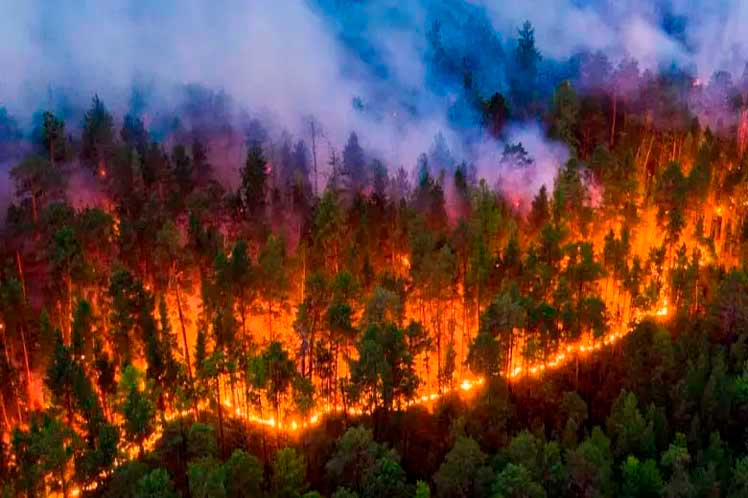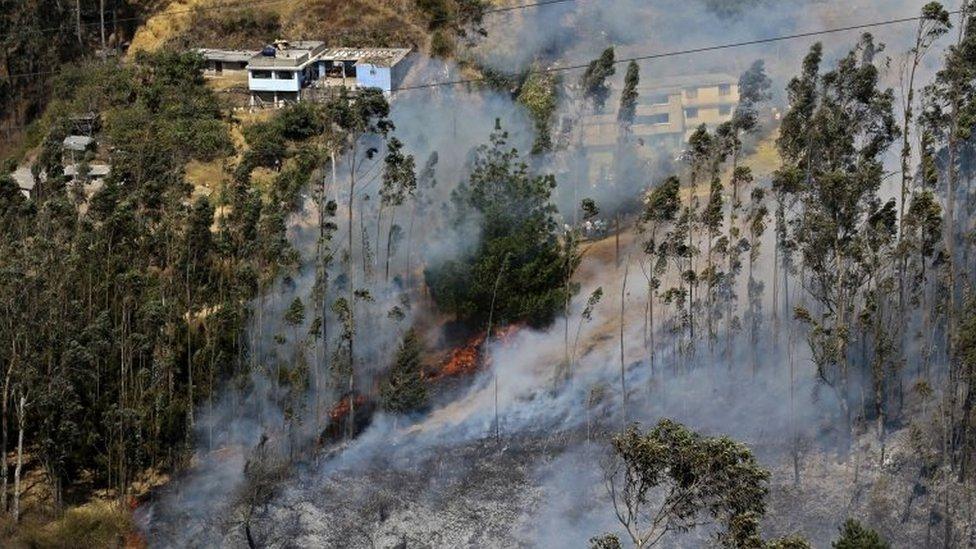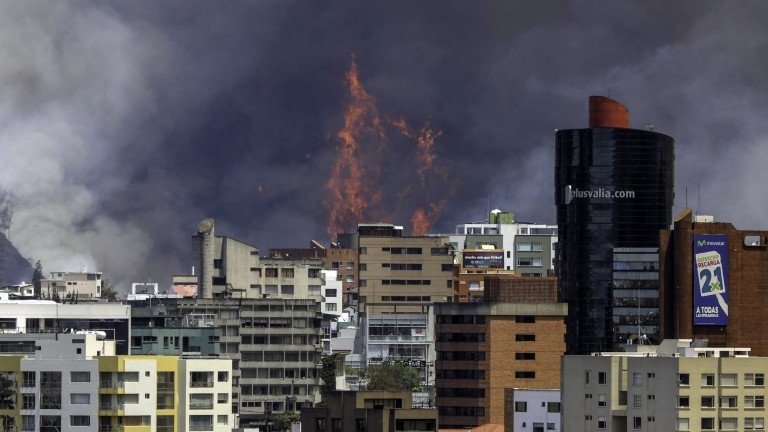The impact of Ecuador forest fires on the wood industry has been catastrophic, with flames sweeping across vast forest areas, and turning the capital city into an apocalyptic red haze. This severe environmental disaster has disrupted the supply chain, destroyed valuable timber resources, and put the future of Ecuador’s wood industry at risk. In this article, we will dive into the 5 most devastating effects that these forest fires have had on the wood industry, both within Ecuador and globally.
1. Destruction of Valuable Timber Resources
The first and most immediate impact of Ecuador forest fires on the wood industry is the extensive destruction of timber resources. Thousands of hectares of forests, containing valuable hardwoods and softwoods, have been engulfed in flames. These trees, which take decades to mature, have been wiped out in a matter of days, resulting in a severe shortage of raw materials for the wood industry.
The loss of these timber resources not only affects local sawmills and wood processing plants but also disrupts the supply of Ecuadorian wood products to international markets. Many hardwoods like mahogany, cedar, and teak, which are highly sought after, have become scarcer due to this devastation.
2. Disruption of the Wood Supply Chain
The impact of Ecuador forest fires on the wood industry goes beyond the destruction of trees. The fires have caused severe disruptions to the wood supply chain. Roads, transportation routes, and infrastructure that connect forests to processing plants and export facilities have been damaged or blocked. This has made it challenging for logging companies and wood exporters to transport timber to markets.
The apocalyptic red haze covering Ecuador’s capital city has made transportation even more difficult, as visibility is reduced and air quality is hazardous. These disruptions have led to delays, increased costs, and, in some cases, the complete halt of wood exports, impacting both local businesses and international buyers.
3. Skyrocketing Wood Prices
One of the most noticeable effects of Ecuador forest fires on the wood industry is the dramatic increase in wood prices. As timber resources become scarcer and supply chains are disrupted, the cost of raw wood has surged. This price hike has affected everything from construction projects to furniture manufacturing, making it more expensive to produce wood-based products.
For exporters, this means higher profits in the short term, but for consumers and industries dependent on wood, the increased costs could lead to a slowdown in demand. This surge in prices is expected to have long-term implications for the wood industry, affecting everything from home construction to the production of wooden furniture and packaging materials.
4. Negative Environmental Impact and Loss of Biodiversity
Beyond the immediate economic consequences, the impact of Ecuador forest fires on the wood industry has led to a devastating environmental crisis. The destruction of forests has resulted in the loss of biodiversity, as countless plant and animal species have been displaced or killed by the fires. This not only affects the wood industry but also threatens the balance of the ecosystem.
The intense forest fires have also released massive amounts of carbon dioxide into the atmosphere, contributing to climate change. This has created a negative cycle, where rising temperatures and changing weather patterns make forests more vulnerable to future fires, potentially threatening the wood industry for years to come.
5. Increased Demand for Sustainable Wood Practices
Despite the destruction, there is a positive outcome from the impact of Ecuador forest fires on the wood industry: the push for more sustainable wood practices. As the fires have highlighted the vulnerability of Ecuador’s forests, there is a growing call for sustainable forestry practices, reforestation projects, and responsible logging methods.
Many companies and environmental organizations are stepping up efforts to plant new trees, promote sustainable wood harvesting, and protect remaining forests. This shift towards sustainability could lead to a more resilient and eco-friendly wood industry in the long term, helping to restore Ecuador’s forests and ensure a steady supply of timber for future generations.
Why Is the Impact of Ecuador Forest Fires on the Wood Industry So Severe?
The impact of Ecuador forest fires on the wood industry is particularly severe because Ecuador is one of the world’s major exporters of timber and wood products. The country’s forests are rich in high-quality hardwoods, which are in high demand across the globe. The fires have not only destroyed these valuable resources but also disrupted the infrastructure needed to harvest, process, and export wood.
The Role of the Apocalyptic Red Capital in the Wood Crisis
The “apocalyptic red capital” of Ecuador, with its eerie red skies caused by the smoke and ash from the forest fires, has become a symbol of the crisis facing the wood industry. This unsettling sight serves as a reminder of the scale of destruction and the urgent need to address the impact of Ecuador forest fires on the wood industry.
The red haze has not only made it difficult for workers to operate but also poses health risks, making it even more challenging to manage the fires and begin recovery efforts. This environmental crisis has intensified the negative effects on the wood industry, further complicating efforts to rebuild and restore normal operations.
How Can the Wood Industry Recover from the Impact of Ecuador Forest Fires?
Recovering from the impact of Ecuador forest fires on the wood industry will require a coordinated effort from businesses, governments, and environmental organizations. Some of the key steps that can be taken include:
- Reforestation: Planting new trees to replace those lost in the fires is essential for restoring the wood supply and protecting the environment.
- Investing in Fire Prevention: Implementing better fire prevention and management strategies can help reduce the risk of future fires and protect valuable timber resources.
- Promoting Sustainable Logging: By adopting sustainable logging practices, the wood industry can minimize environmental damage and ensure a steady supply of timber for the future.
Conclusion: The Long-Term Impact of Ecuador Forest Fires on the Wood Industry
The impact of Ecuador forest fires on the wood industry has been nothing short of devastating, with far-reaching consequences that will be felt for years to come. From the destruction of timber resources to the disruption of supply chains and the rise in wood prices, the fires have highlighted the fragility of the wood industry in the face of natural disasters.
However, this crisis also presents an opportunity for change. By focusing on sustainability, reforestation, and better fire prevention measures, the wood industry can rebuild and become more resilient in the future. The lessons learned from this disaster will be crucial for protecting Ecuador’s forests and ensuring the long-term viability of the wood industry.
You can read more articles by visiting our news here.










